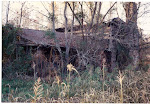Many do not know the origin of the Shillelagh other than it is an Irish icon. Claims bounce back and forth between Ireland and Great Britain as to who made it and used it first, but most authorities give the Irish credit for its invention.
"Sticks have been used as weapons since fighting began, however the skilled use of hardwood clubs by the people of Shillelagh led to these clubs to be called Shillelagh's by Richard II in 1395. With the dispersion of these peoples through the ages the term Shillelagh spread throughout Ireland and the new world in reference to a weighted fighting stick. The unique qualities of these sticks were first developed by the Siol Ealaigh people of this region more than 1200 years ago.
When it became illegal for any Irish person to carry a weapon their Shillelagh's were often elongated to appear as a walking stick but were just as effictive a weapon when the need arose. These irish who emigrated to America enjoyed the right there of all men to carry arms and Shillelagh's became very promenant in the faction fights in the turbulant years of the young United States. Many Irish Americans can remember this kind of Shillelagh in use or will have heard stories about them while most English and Irish people will remember them as walking sticks or lucky charms from home." ---Olde Shillelagh Stick Makers, Shillelagh, County Wicklow, Ireland.
These sticks are of all designs. It is the maker who decides what it will be. This design is primarily for walking, but can be used in the traditional manor as a weapon for self defense, if ever needed. Not its intention, but what is tradition if not to replicate it?
The carving phase is now finished. This was fairly easy, a bit time consuming though. The hardest part was making the wrist strap hole at the bottom of the stick. The same knife used for carving made the hole. Since the knife had only a half inch long awl and the stick is almost an inch wide, careful measurements were taken to assure the holes on each side would line up. They did. Next will come the smoothing phase. This will be interesting. Stay tuned.
"Sticks have been used as weapons since fighting began, however the skilled use of hardwood clubs by the people of Shillelagh led to these clubs to be called Shillelagh's by Richard II in 1395. With the dispersion of these peoples through the ages the term Shillelagh spread throughout Ireland and the new world in reference to a weighted fighting stick. The unique qualities of these sticks were first developed by the Siol Ealaigh people of this region more than 1200 years ago.
When it became illegal for any Irish person to carry a weapon their Shillelagh's were often elongated to appear as a walking stick but were just as effictive a weapon when the need arose. These irish who emigrated to America enjoyed the right there of all men to carry arms and Shillelagh's became very promenant in the faction fights in the turbulant years of the young United States. Many Irish Americans can remember this kind of Shillelagh in use or will have heard stories about them while most English and Irish people will remember them as walking sticks or lucky charms from home." ---Olde Shillelagh Stick Makers, Shillelagh, County Wicklow, Ireland.
These sticks are of all designs. It is the maker who decides what it will be. This design is primarily for walking, but can be used in the traditional manor as a weapon for self defense, if ever needed. Not its intention, but what is tradition if not to replicate it?
The carving phase is now finished. This was fairly easy, a bit time consuming though. The hardest part was making the wrist strap hole at the bottom of the stick. The same knife used for carving made the hole. Since the knife had only a half inch long awl and the stick is almost an inch wide, careful measurements were taken to assure the holes on each side would line up. They did. Next will come the smoothing phase. This will be interesting. Stay tuned.















